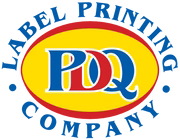
Pharmacy Labels: Your Guide to Safe and Effective Medication Use
Share
In modern healthcare systems, pharmacy labels are more than just stickers on medication packages—they are vital tools ensuring safe and effective treatment. These labels bridge the gap between pharmacists and patients, offering clarity and compliance in a complex system. Let’s explore why they’re indispensable, with a focus on practices in Australia.
1. Regulatory Compliance: Meeting National Standards (e.g., TGA)
In Australia, the Therapeutic Goods Administration (TGA) mandates strict guidelines for medication labeling to safeguard public health. Pharmacy labels must include:
- Patient name and address
- Medication name, strength, and quantity
- Dosage instructions (e.g., “Take twice daily with food”)
- Prescriber and pharmacist details
- Expiry date and batch number
Adhering to these standards ensures accountability and aligns with Australia’s national regulations, minimizing legal risks for healthcare providers.
2. Patient Safety: Preventing Medication Errors
Misreading labels can lead to dangerous errors. In Australia, studies suggest 2–3% of hospital admissions stem from medication-related issues, many of which could be prevented with clear labeling. Features like bold fonts, plain language, and multilingual support (critical in culturally diverse countries like Australia) enhance understanding. For instance, a label stating “Avoid sunlight” warns of phototoxic reactions, preventing harm.
3. Accessibility: Inclusive Design Matters
Labels must cater to diverse populations, including the elderly and visually impaired. In Australia, the TGA recommends high-contrast text, readable fonts, and Braille options. Pharmacies like Chemist Warehouse use large print on labels, ensuring instructions like “Take ONE tablet at bedtime” are legible, fostering independence in medication management.
4. Personalized Care: Tailored to Individual Needs
Each label is customized to reflect prescribed doses and specific warnings (e.g., “Do not crush—swallow whole”). This personalization is critical in managing chronic diseases like diabetes, where precise insulin dosing is crucial. Australian pharmacists often add reminders like “Complete the course” to combat antibiotic resistance, aligning with national health campaigns.
5. Technology and Innovation: Reducing Human Error
Digital advancements, such as barcodes linked to systems like My Health Record (Australia’s digital health platform), enable seamless tracking of medication histories. Automated dispensing systems in Australian pharmacies minimize manual errors, while QR codes introduced during COVID-19 facilitated contactless pickups, ensuring continuity of care.
6. Legal and Storage Considerations
Labels act as legal documents, verifying correct dispensing. They also include storage advice (e.g., “Refrigerate below 4°C”), vital in Australia’s climate to maintain drug efficacy.
Pharmacy labels are unsung heroes in healthcare systems worldwide. In Australia, their role is amplified by rigorous TGA standards, innovative design, and a commitment to patient-centered care. Next time you receive medication, take a moment to appreciate the meticulous detail on that small label—it’s a lifeline designed for your well-being.



